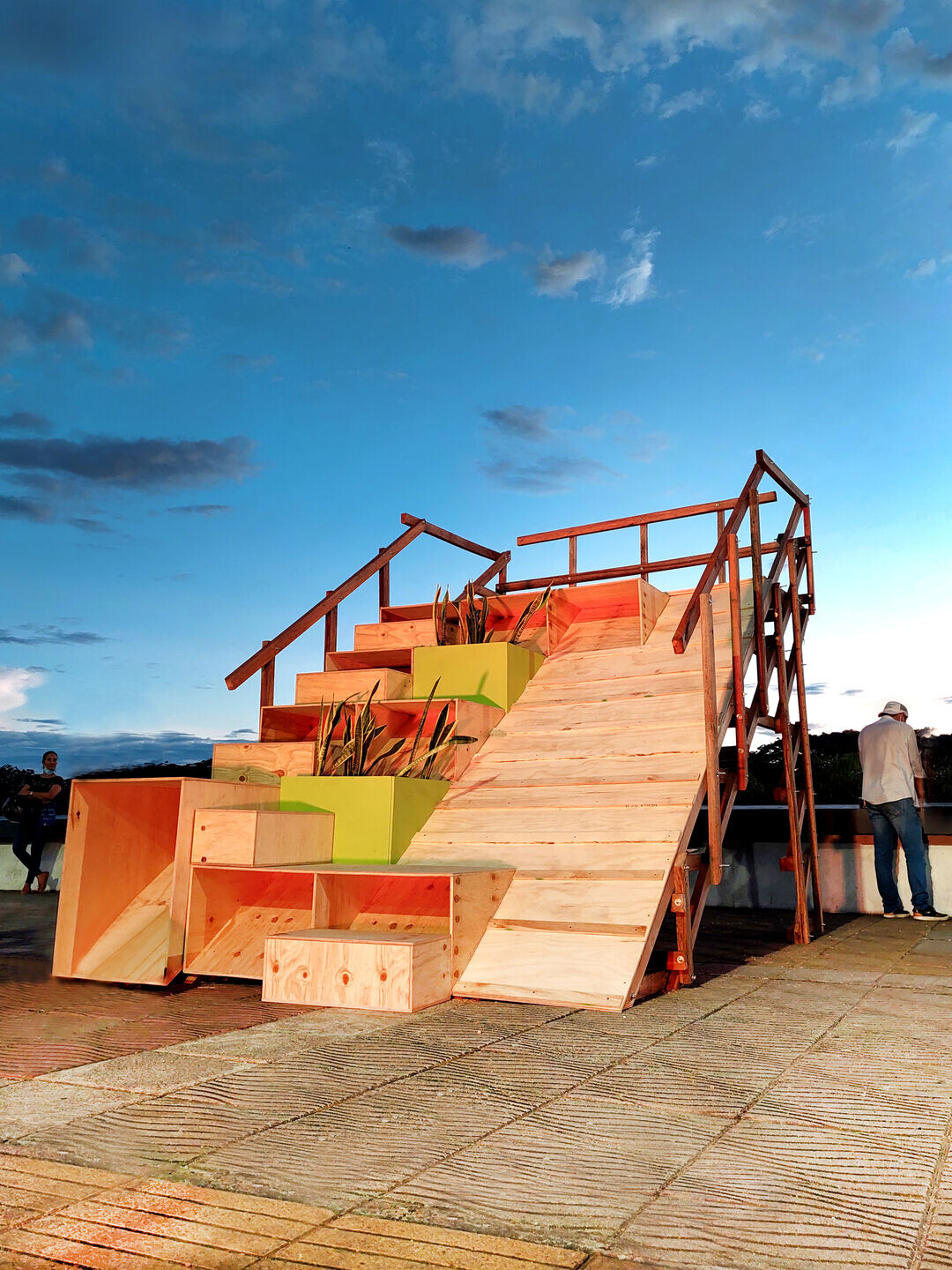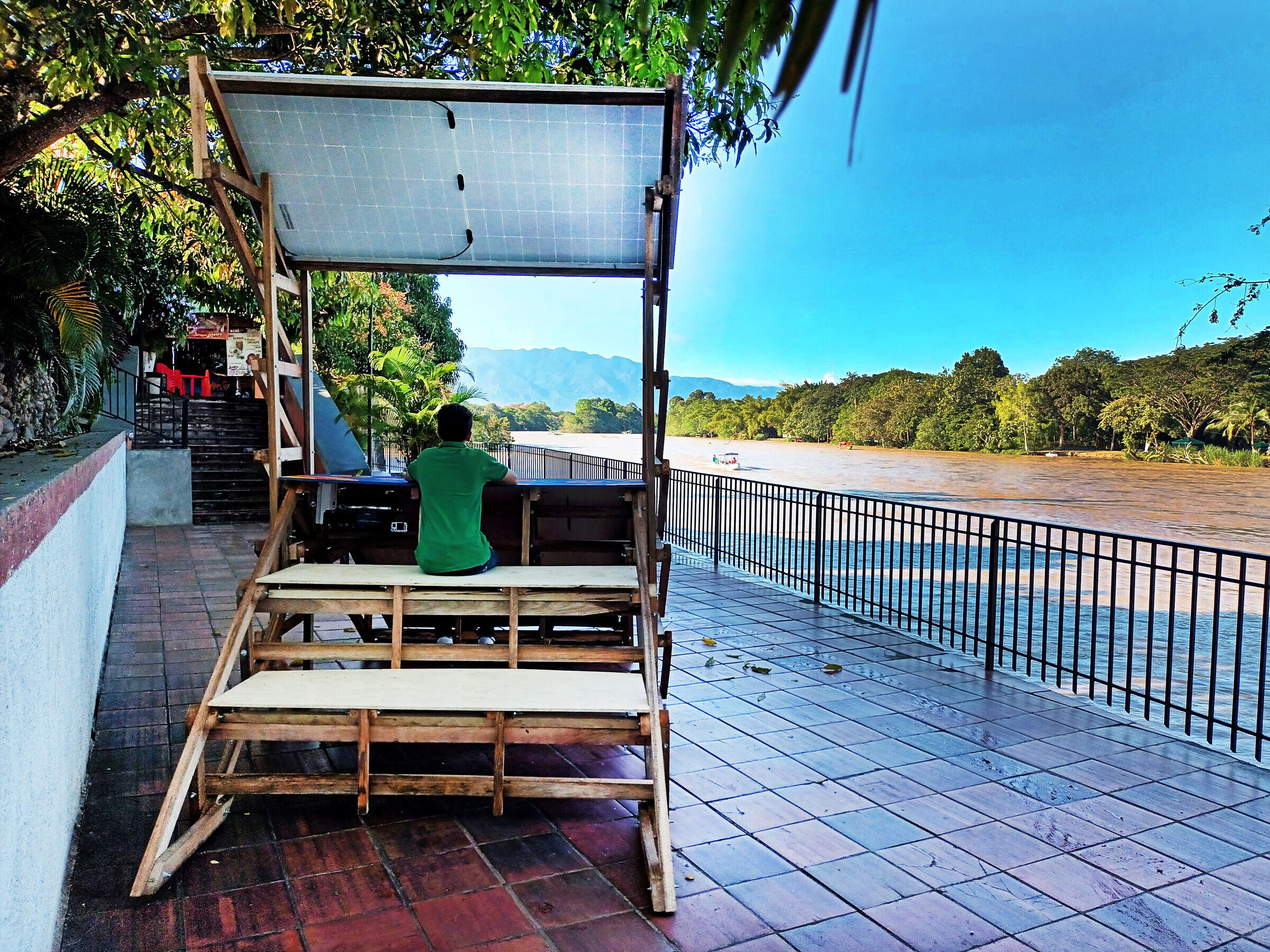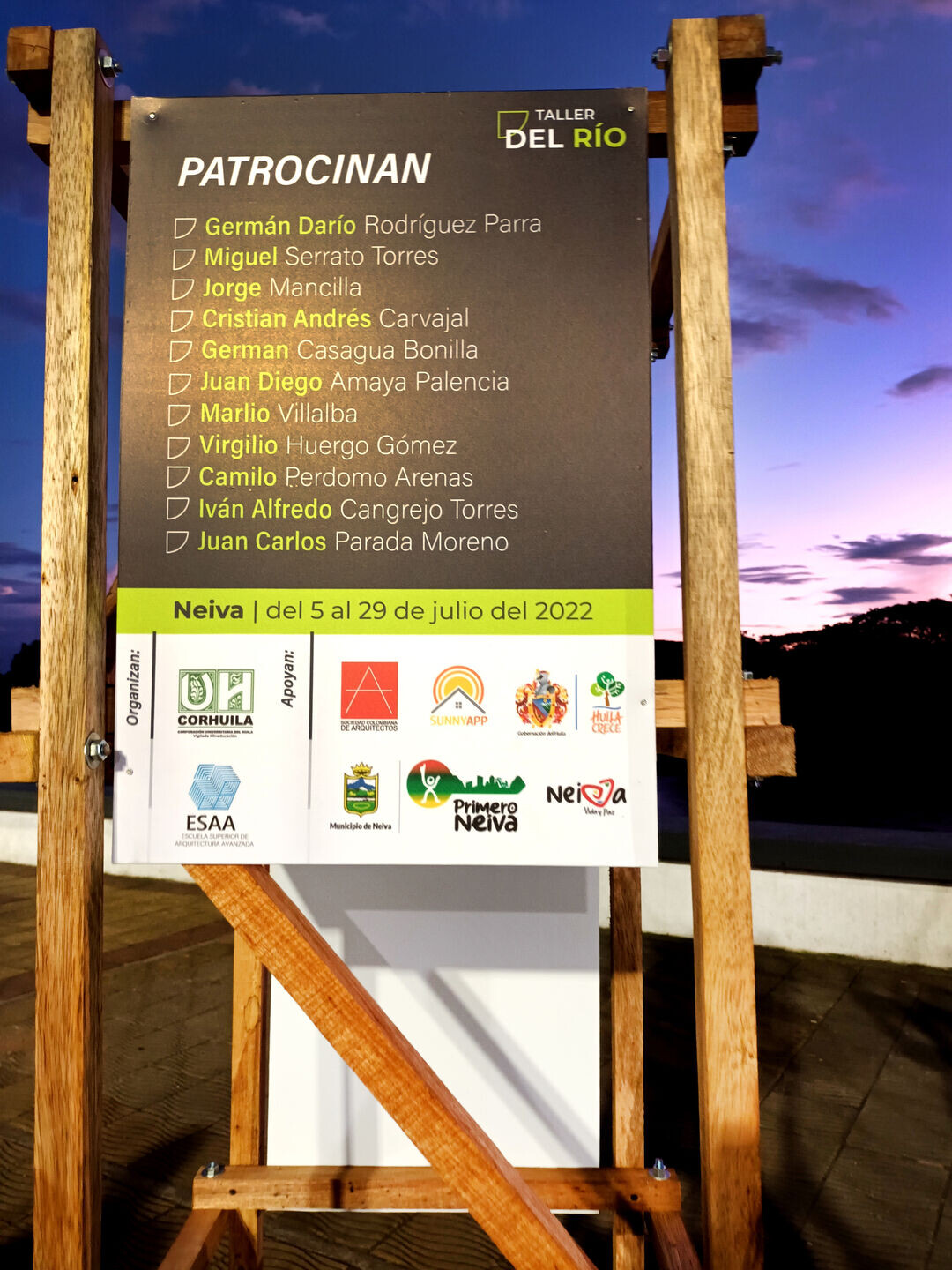The River Workshop raised with the mission of rediscovering in the same place and in one project, the world of academia, businessmen and professionals of art, design, architecture, engineering, promoted by CORHUILA University and ESAA, based in ideas to rethink collectively about the dynamics, imaginaries and interactions that build the new city models.
Through experimental practices and collaborative environments that allow the construction of a disruptive urban intervention, with the ability to dialogue and reflect on being, belonging and living in the CITY OF THE RIVER MAGDALENA.

As a result of the "Taller del Río" "YUMA LAB" was born.
Yuma = (River of the friendly country), name with which the Muisca indigenous culture calls the Magdalena River.
LAB = Acronym that means (laboratory) where experimental and creative processes are built.
An urban intervention made up of five (5) diverse and flexible prototypes that allow the articulation of different uses (viewpoint, agora, stay, picnic area, dining room, inn and dock), which were developed through four (4) strategic points located on the Magdalena river boardwalk, transforming these spaces into collective places to imagine the future of the city, operating as managers and catalysts of communities at different scales, bringing the inhabitants of the city of Neiva closer to the river and as a meeting point for life citizen.

WORKSHOP PROCESS:
The workshop begins with the analysis of the place of intervention, in which students and teachers through an immersive process of understanding the place; The Plaza de la Gaitana and its surroundings. Strengths and problems were identified and a MASA PLAN of micro-interventions located in four (4) strategic projects was established.

The first project was defined in the Plaza de la Gaitana, which must resolve how to sit down to contemplate the Gaitana, how to provide shade and how to observe the Magdalena River; the second in an intermediate square that must create shade, facilitate rest, food and contemplation of the Magdalena River; the third project located in the forest on the edge of the river should improve the quality of stay under the trees to contemplate the Magdalena River, eating a picnic and leisure; and the fourth project must resolve the link between the city and the Plaza de la Gaitana.

After defining the functional strategies, the form, materiality and structure were worked on, establishing that each project would work with wooden trusses that structure and dimension each intervention, inclined platforms materialized in plywood. and furniture of different shapes, sizes and colors that solve the specific activities of each project and that can be disassembled and assembled for other uses.

As a final result, in the Plaza de la Gaitana, two modules were built composed of the repetition of a truss that resolves the stands, seat, viewpoint and shadow, one functions as a viewpoint towards the Gaitana, and the other towards the Magdalena River. In the middle square, a module by means of two trusses that create furniture for contemplation and a shaded table. Under the trees along the river, two platforms are defined that are located on the green areas to allow users to have a picnic, read a book or take a nap.

It should be noted that the project is concerned with the use of renewable energies, with USB charging points and reading points with light through solar panels installed by renewable energy engineering students from CORHUILA and the company Sunny App.
On the roadway, a tactical urban planning intervention was proposed by the artist Katherine Bello Gómez to improve the connection of the intervention area with the city.

Finally, three (3) information totems were built designed to facilitate, guide and provide instructions to users who visit the urban interventions proposed as a result of the workshop.
The prefabrication was carried out in three (3) days through collaborative work (Learning by Doing) between students, teachers, collaborators and the community. On-site assembly took one (2) days. Of habitable and efficient equipment that seeks to solve some of the most pressing challenges in urban life in the city of Neiva.

Students: (Colombia) Adriana María Ipuz Oviedo, Juan Sebastián Cruz Palencia, María del Mar Echeverri Tavera, María Paula Rojas Perdomo, Sara Gabriela Gómez Tibaque, Kevin Tovar Peña, María Paula Chacón Cubillos, Julián Horta Charry, Luisa Fernanda Garzón Gómez, Carol Vanessa Guerrero Carreño, María José Arbeláez Cándelo, María Angélica Gómez Larios, Fabián Andrés Pastrana Polo, Juan Sebastián Bustos Pérez, Laura Manuela García Quintero, Steffany Salamanca Conde, Darwin Sebastián Molina Amaya, Maycol Eduardo Ospina Matute, Juan Diego Bustos Castro, Edwin Esteban Cohetato Otálora, Misael Ernesto Pinzón Artunduaga, Juan David Ramírez Manchola, Daniel Achury, Maria Valeria Ordoñez Vidarte. (Perú) Ydalia Yesenia Velásquez Casana, Carlos Velásquez Casana,
Support associations: Government of Huila, Mayor of Neiva, Colombian Society of Regional Architects Huila, Sunny App.















































